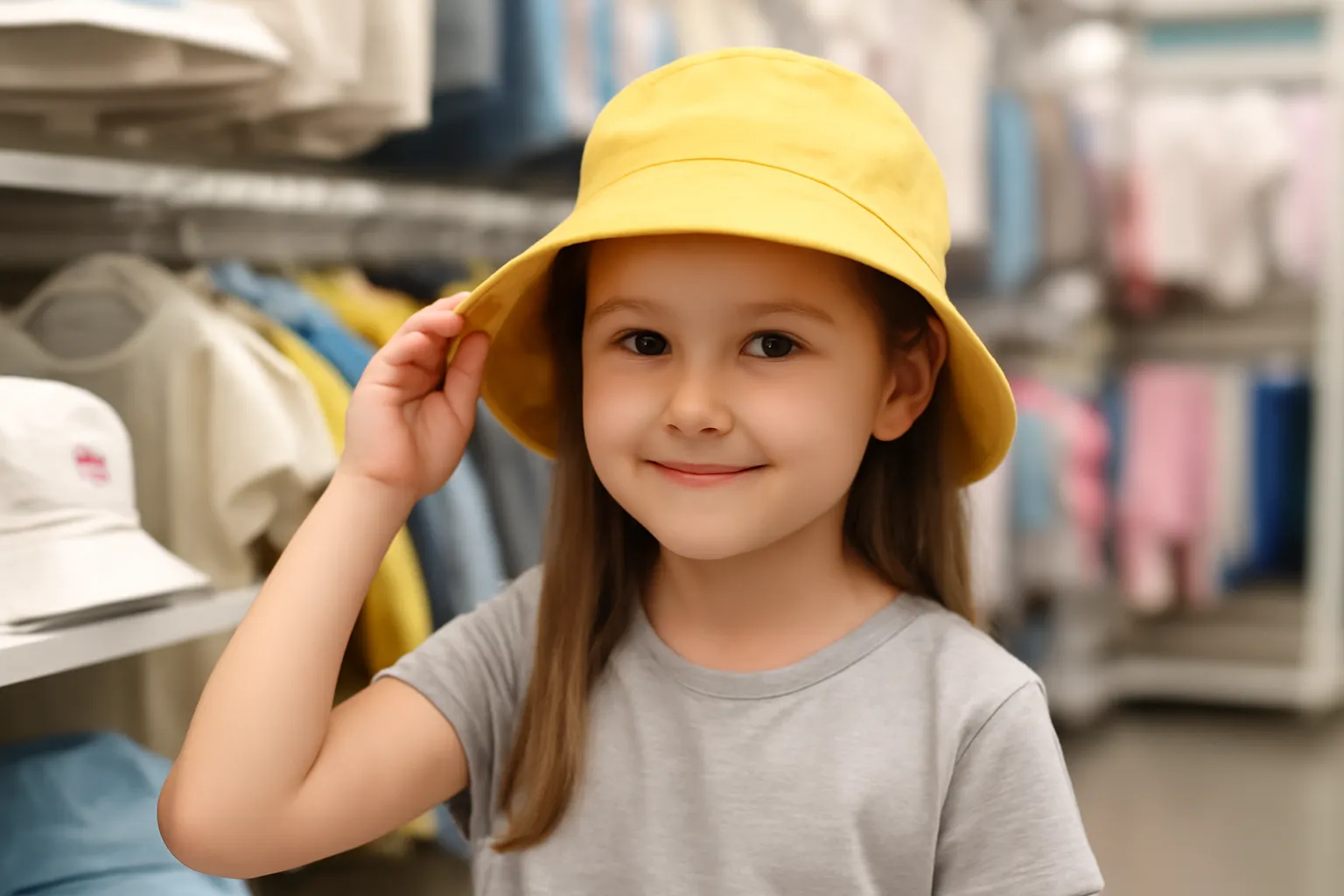Ever wondered what size hat your child should be wearing as they grow? Or how a baby’s head size transitions into that of an elementary school student? Picking the right hat isn’t just about fashion—it’s about fit, function, and comfort. In this article, we’ll break down the essential hat sizes for children, from infancy to elementary school age, and help you make confident sizing decisions for every stage.
Baby mother size
Understanding baby hat sizes begins long before the child is even walking. During infancy, head circumference grows rapidly, especially in the first year. Mothers often find themselves purchasing multiple hat sizes during this period—not only due to growth but also to match the season and activity (sun hats, beanies, soft caps, etc.).
Key Size Ranges for Babies
-
Newborn (0–3 months): Head circumference of 33–38 cm (13–15 inches)
-
Infant (3–6 months): 38–43 cm (15–17 inches)
-
Baby (6–12 months): 43–46 cm (17–18 inches)
-
Toddler (1–2 years): 46–49 cm (18–19 inches)
From personal experience, I remember constantly adjusting my son’s sun hats during his first summer. At just six months, we went through three different hat sizes in three months. What helped most was elasticated bands or adjustable straps that could accommodate this fast growth.
Why Accurate Sizing Matters
An ill-fitting baby hat can lead to:
-
Discomfort and fussiness
-
Inadequate sun or cold protection
-
Reduced head mobility or visibility
Pro Tip
Always measure your baby’s head with a soft tape measure, wrapping it just above the eyebrows and around the back of the head. Measure every 2–3 months in the first year.
더욱 자세히 알아보려면 아래 버튼을 클릭하세요.
Elementary school hat size
By the time a child enters elementary school (typically around age 6), their head growth slows, but sizing still matters. Unlike babies, older children start to have style preferences and physical activities—meaning hats need to be both functional and stylish.
Average Head Sizes by Age
-
6–7 years: 50–52 cm (19.5–20.5 inches)
-
8–9 years: 51–53 cm (20–21 inches)
-
10–12 years: 52–55 cm (20.5–21.5 inches)
These measurements are especially helpful when shopping for school uniforms, sports caps, or seasonal gear like winter beanies and summer hats. I remember when my daughter joined a school hiking club in 4th grade—we had to try three different hats until we found one that stayed put, didn’t trap sweat, and matched her team’s colors.
Common Elementary Hat Styles
-
Bucket Hats: Great for sun protection during field trips
-
Baseball Caps: Often part of school uniform codes
-
Beanies: Perfect for winter warmth
-
Visors: Useful for sports like tennis or baseball
Tips for Finding the Right Fit
-
Look for adjustable straps or Velcro.
-
Choose materials that are breathable and washable.
-
If buying online, refer to brand-specific size charts.
A Parent’s Checklist
-
✅ Does it fit snugly without being tight?
-
✅ Does it cover ears or provide shade (as needed)?
-
✅ Will your child actually wear it?
더욱 자세히 알아보려면 아래 버튼을 클릭하세요.
Hat size
Hat sizes may seem like just numbers on a tag, but they tell a story of growth, function, and identity. Understanding the general hat sizing system can empower parents to make smart, long-term purchases that grow with their children.
International Hat Size Standards
-
Small (S): 50–52 cm
-
Medium (M): 53–55 cm
-
Large (L): 56–58 cm (teens and small adults)
Unlike clothing, hat sizing varies less across brands, but it’s always safe to check. I once ordered a medium cap online for my 10-year-old, thinking he had a standard-sized head. It arrived too loose! Since then, I always verify with actual measurements and brand guides.
Measuring Like a Pro
-
Use a flexible tape measure.
-
Start about 1 cm above the eyebrows.
-
Measure around the largest part of the head.
-
Compare with sizing charts (round up if in between sizes).
The Importance of a Good Fit
-
Prevents sunburn (with brims that stay in place)
-
Reduces the risk of losing hats at school or during sports
-
Boosts confidence—kids are more likely to wear a hat they like and that fits
And don’t forget growth spurts! Even within a single school year, a child’s head may grow by 1–2 cm.
더욱 자세히 알아보려면 아래 버튼을 클릭하세요.
Conclusion
Choosing the right hat size for a child—whether a baby or elementary school student—means more than just finding something cute. It’s about safety, comfort, and style. Remember: always measure, check the fit regularly, and involve your child in the selection process. As the saying goes, “The right hat can change your day”—and when it fits just right, it can change your child’s day too.
Let your child shine, protected and confident, in a hat made just for them.






